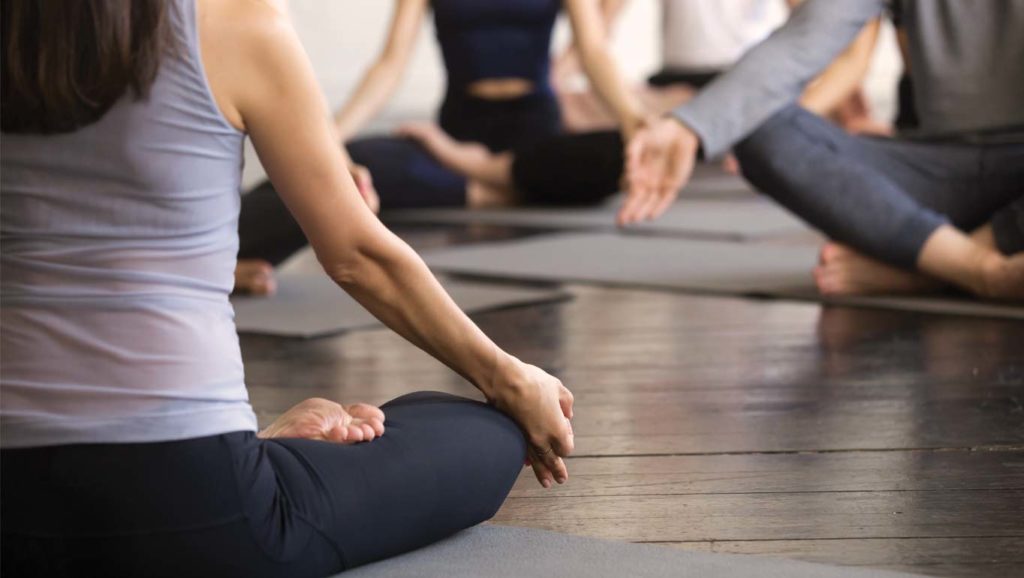Long work hours, office politics, and multitasking take a massive toll on your mind and body. Most of us turn a blind eye to this accumulating stress and end up with a weak body, an agitated mind, damaged relationships, and increased spending on healthcare.
The key to breaking this vicious cycle is managing the little stressors at work. Yoga is a beautiful tool that can help us do so. This might sound weird, right? How can yoga help relieve stress in the workplace? When we think about yoga, the first thing that comes to mind is twisting and turning the body. However, ‘Asana’ (body postures) is just one of the eight major components of yoga. The term ‘yoga’ itself means union and harmony. Harmony of the body, breath, and mind. Thus, if we see yoga holistically in its complete meaning, it is the science of managing our thoughts, emotions and the way to be steady and happy even through all adversities in our work and life. Let’s take a glimpse into how yoga can strengthen our mental well-being, as well as physical resilience while we work in a fast-paced world.
Unlocking one of the most important sources of energy: our breath
We breathe in and out over 22,000 times daily, yet how many of these breaths do we take consciously? One of the key components of yoga is pranayama, which deals with the skill of breathing effectively in a way that opens the required energy channels in our body. Using breathing techniques (pranayama), it is easily possible to stimulate our nervous system in the right way, substantially improving our body’s energy levels. This can serve as a game changer in the workplace, where you have a lot to do in a limited time. To do more work in less time, we require higher energy levels, and accurately managing our breath can increase and maintain these energy levels throughout the day. Across scientific research, pranayamas have also been found to decrease chronic pain symptoms, improve mental focus, and reduce anxiety and depression. Thus, practicing a couple of pranayamas for 5-10 minutes during a break can tremendously recharge us and drain any accumulating stress.
Giving a break to our mind
We jump from one task to another all day, and our mind is constantly thinking. You might be on a lunch break or slouching on the lounge, but your mind is still filled with thoughts, isn’t it? Because of this, the mind keeps getting filled with one thought over the other and another on top of all of these, resulting in a lack of clarity and negative emotions like anger, frustration, and dissatisfaction.
One of the eight constituents of yoga: dhyan (meditation), deals with this. Again, by a common misconception, people think meditation is focus and concentration. However, it is the complete opposite. It is about giving the mind a break and experiencing pure serenity and bliss within.
Because most people haven’t ever experienced this dimension, sitting with eyes closed for just a few minutes in meditation seems challenging and even scary. Luckily there are techniques and practices for guiding you into this state step by step. One of these basic techniques is asanas (various body postures). Many people and even some yoga instructors think that asanas are for the flexibility and strength of the body. The true goal of asanas is to get your mind into the present moment and in a tranquil, peaceful state – which is often absent. Strength and flexibility are the by-products of practicing asanas.

How to learn yoga holistically?
There are several advanced techniques in yoga to make the transition truly effortless from stress to serenity and from frustration to bliss. Yoga has a lot more to offer than we can imagine. However, when it comes to learning yoga, it has to come from someone who has lived and mastered it — not from books. Learning yoga is not like learning to code.
It is not simply a knowledge transfer but a transfer of experience. Thus learning it from a guru (master/teacher) who has understood yoga in its entirety (not merely as an exercise/workout) and has practiced it for years is of utmost importance and the best way to imbibe its benefits.
Some people sway away from yoga because they think it is a religious practice or they feel that one needs to have a particular belief system to practice yoga — both of which are myths. Yoga is a set of tools to uplift the quality and experience of life and is championed by modern science. Several independent pieces of research, like the one conducted at Harvard University, have found that regular yoga practice improved concentration and productivity of workers, reduced fatigue, stress hormones, and depression, and elevated levels of a brain chemical called Gamma-Aminobutyric Acid (GABA), which is associated with better mood and decreased anxiety.
In a nutshell, at work, our health is as vital as our productivity. Yoga can be the perfect tool for you to have both: extraordinary performance and utmost well-being.



